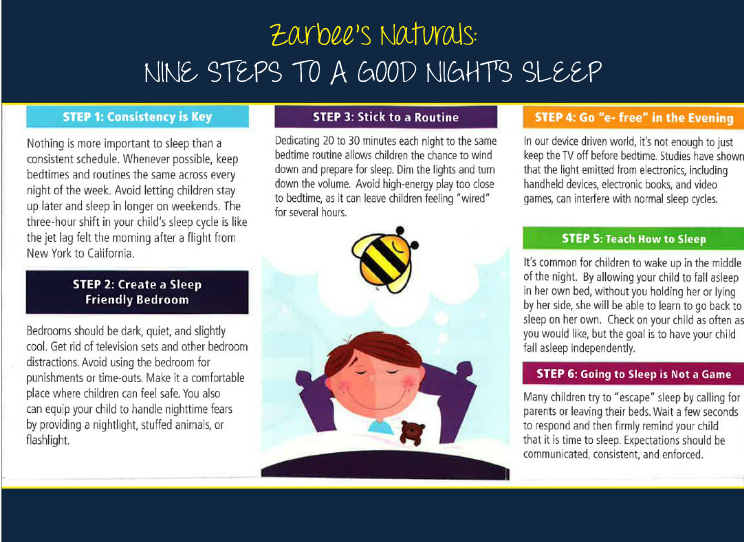How to get your child on a sleep schedule
Get Your Child's Sleep Schedule Back on Track Before School
Summertime, and the living’s easy, right? For many families, that means flexible schedules, vacations, and long days followed by later nights. Traveling, staying up late, and breaking the “school routine” of bedtimes and wake-up times was fun while it lasted. But, now the first day of school is creeping up on the calendar, and you’re struggling to get your child to bed at a reasonable hour and wake up alert and on time. What to do?
Sleep is everything, especially for young, growing minds and bodies. If summer’s longer days and shorter nights have reset your child’s internal clock, consider these tips for school-year sleep success.
Why the Body Needs Sleep
Preschoolers, kindergarteners, growing tweens, young adults, and everyone in between need good sleep. It’s vital to children of all ages. Restful sleep, along with proper nutrition and physical activity, impacts our overall health and well-being. In children, the right amount of sleep directly influences their health and development.
Our bodies may appear to be at rest when we sleep, but they’re really hard at work. Sleep allows our bodies to fight off infections and helps us metabolize sugar to prevent diabetes. Deep sleep triggers the release of a hormone that stimulates growth in children and teens. This hormone also boosts muscle mass and helps to repair cells and tissues—not only in children but in adults too. Ironically, sleep is a time when our bodies “recharge and repair.”
If you want your child to succeed this school year, getting enough sleep should be a top priority. When children don’t get enough sleep—even just 25 minutes less a night—it can lead to lower grades, fatigue, and trouble concentrating during school. But the most destructive symptom of a bad night’s sleep in children is displayed in their behavior, as most parents and teachers can agree. The symptoms of ADHD mirror those of tired kids. Acting impulsive and distracted are two of the classic ADHD symptoms that can be displayed by simply tired kids.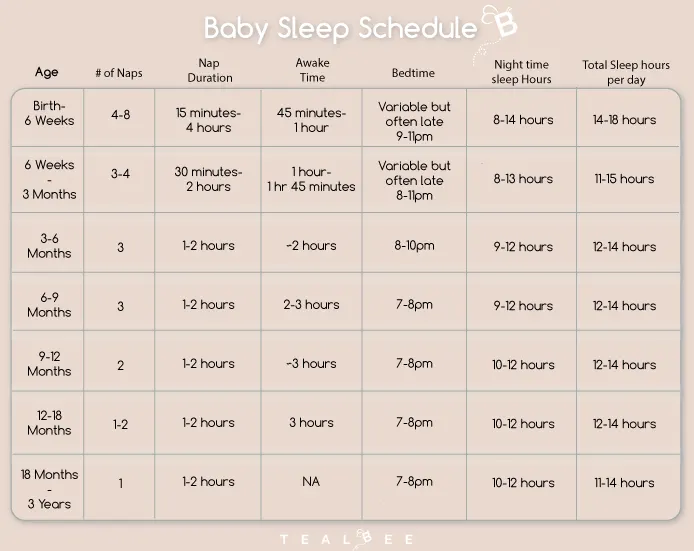
A new school year is an excellent time for parents to evaluate and model good sleep habits, too. Studies show 25% of American adults don’t get enough sleep 15 of every 30 days. To help your family establish healthy nighttime routines, consider these tips.
1. Gradually adjust bedtimes and stick to them.
A week or two before school starts, gradually adjust your child’s bedtime. Move it five to 15 minutes earlier every night, until you’ve reached their ideal bedtime for the school year. Everyone in the household should also adjust theirs gradually, so your child’s circadian rhythms reset. This is more effective than making a sudden and shocking change a day or two before school starts. If you approach a new school routine gently, it will feel normal by the time the first day of school rolls around—and bring smiles for those first-day-of-school pictures!
It’s also important to know how many hours of sleep your child needs so you can count back from wake-up time to determine bedtimes each night.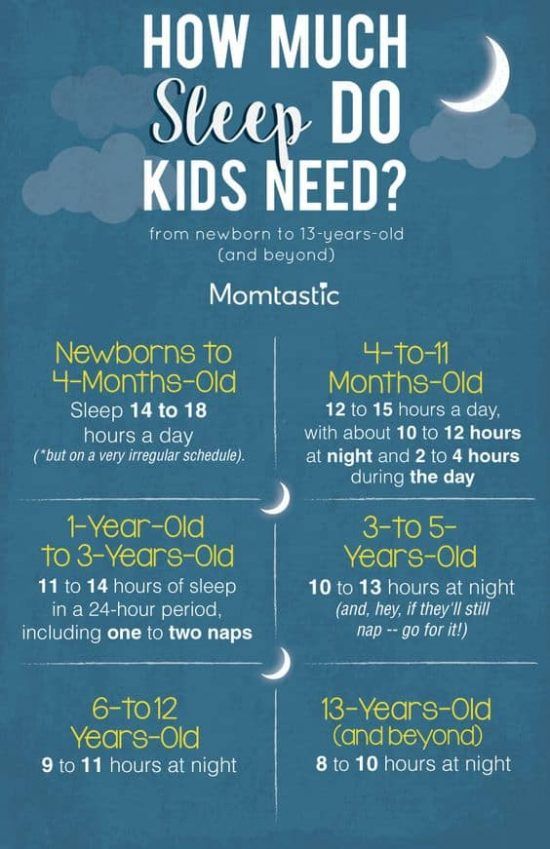 According to the National Sleep Foundation, this is the ideal amount of sleep based on age:
According to the National Sleep Foundation, this is the ideal amount of sleep based on age:
- Preschoolers (ages 3-5) need 10-13 hours
- School-aged children (ages 6-13) need 9-11 hours
- Teens (ages 14-17) need 8-10 hours
- Young adults (ages 18-25) need 7-9 hours
As parents, one of the most challenging tasks is sticking to a consistent bedtime, especially if your child is involved in extracurricular activities or if other surprises pop up throughout the week. But, experts say it’s one of the most important things you can do for your child’s academic success. Maintaining a consistent bedtime—even on weekends—allows your child’s natural circadian rhythms to follow an uninterrupted pattern. This brings healthier physical and mental functioning and better behavior.
2. Establish relaxing bedtime rituals and routines to “wind down.”
Preparing for bedtime should be one of your family’s favorite, cherished times together. Your family may need to plan on 30 minutes or an hour’s worth of time for your child’s routine. This may include taking a bath, drinking a glass of warm milk, diffusing lavender essential oils, brushing your teeth, stretching, reading books, or listening to soothing music.
This may include taking a bath, drinking a glass of warm milk, diffusing lavender essential oils, brushing your teeth, stretching, reading books, or listening to soothing music.
Children crave structure and routine. The younger your child is, the more likely you need to cycle through all or most of these rituals daily. You can think of bedtime as your little oasis to unwind, both mentally and physically, as a family. And, when you repeat the same routine every night, it will cue your child’s brain and body that it’s time to sleep, establishing healthier sleeping habits. Of course, some of the best ways to end the bedtime routine is with a hug, kiss, or snuggle.
3. Turn off technology.
The light generated by our electronic devices is a stimulator. It keeps us alert and awake by delaying your body’s internal clock (your circadian rhythm) and suppressing the release of the sleep-inducing hormone known as melatonin. It’s largely caused by the short-wavelength, artificial blue light emitted.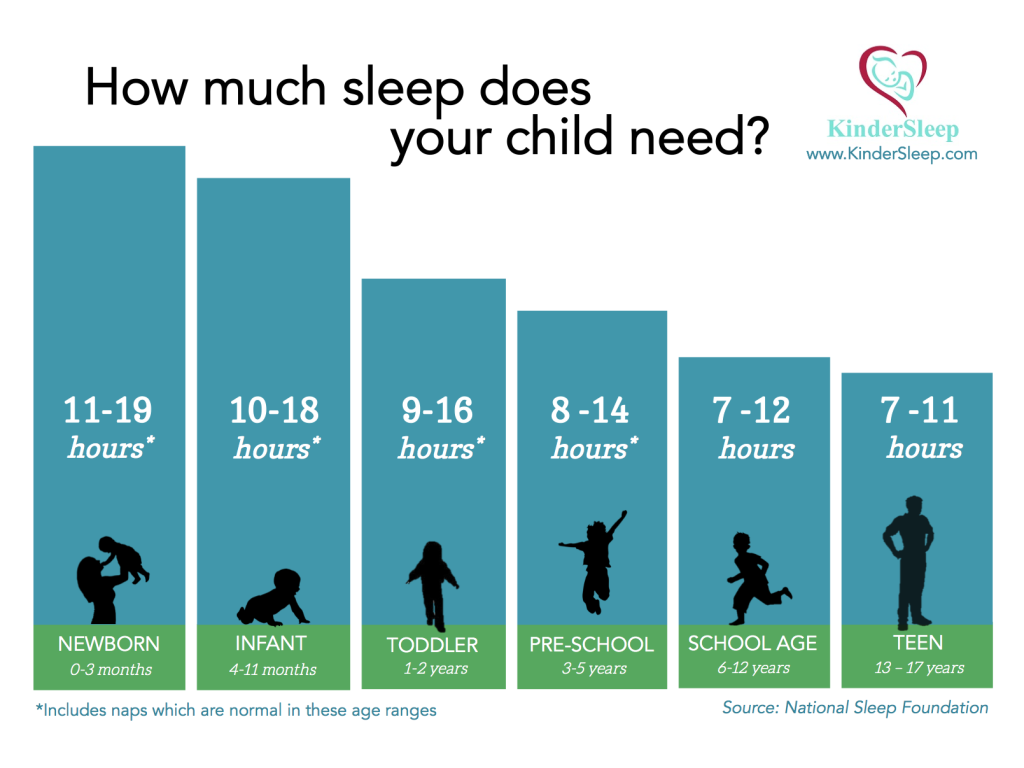
If your child logs two hours of screen time right before bed, for example, it will lower their levels of melatonin by 22%. According to another study, children who use computers, tablets, or phones as sleep aids have later weekday bedtimes, log fewer hours of sleep each week, and often feel sleepy during the day.
So, set a “screen bedtime”—a deadline about an hour before your child’s actual bedtime, when all technology must be turned off. Set recharging stations in the living room, kitchen, or common area of the house away from bedrooms for the night. Your devices will recharge without tempting the kids to check them during this time. If devices are in the bedroom, you or your child may wake up from the “dings” of messages and want to check them. This certainly doesn’t allow for restful sleep!
4. Get organized the night before.
Lay the groundwork for “smooth sailing” in the morning by preparing for the day the night before. Together, complete all homework, pack the backpack, choose and lay out clothes and shoes, and pack a healthy lunch.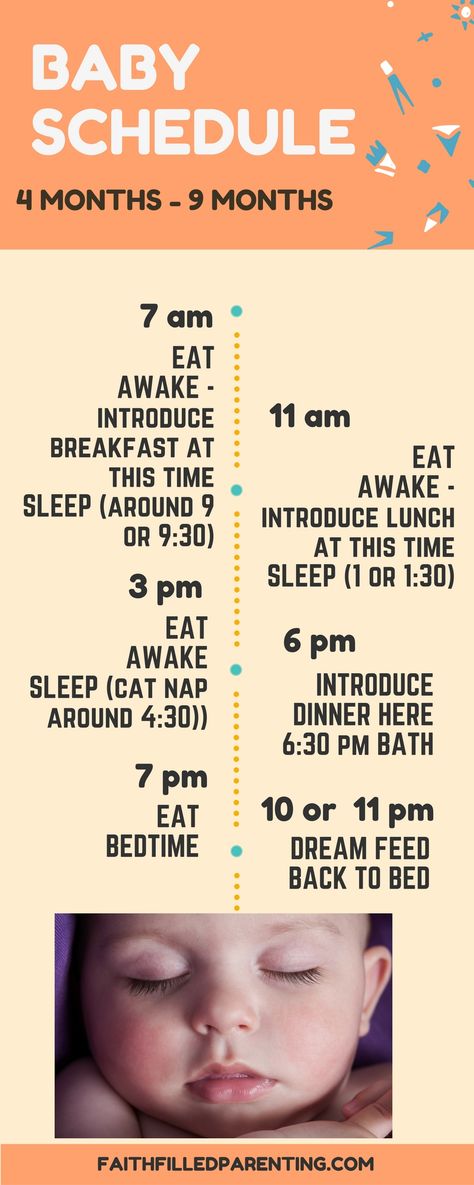 Mornings can be hectic, especially if you have more than one child, a spouse preparing for work, and/or shared bathrooms. Pair that with a child who stayed up too late the night before and forgot to prep for school, and the morning can become a nightmare. But preparing for a successful start to the day the night before removes stress to help you avoid morning meltdowns.
Mornings can be hectic, especially if you have more than one child, a spouse preparing for work, and/or shared bathrooms. Pair that with a child who stayed up too late the night before and forgot to prep for school, and the morning can become a nightmare. But preparing for a successful start to the day the night before removes stress to help you avoid morning meltdowns.
5. Get active for better sleep.
Encourage your child to play hard, not only during recess time, but in the backyard after school, at the local park, or walking or biking together in your neighborhood. The more active they are during the day, the more likely they are to fall asleep faster at bedtime and enjoy a more restful sleep. Research shows if kids don’t get enough sleep and feel tired, they are more likely to be sedentary and burn fewer calories—a chain reaction of unhealthy habits.
Additionally, for every hour children are engaged in sedentary activities, like watching television or playing video games, it takes them an extra three minutes to fall asleep at night. These studies are all proof that physical activity is vital to children’s healthy sleep habits and overall health.
These studies are all proof that physical activity is vital to children’s healthy sleep habits and overall health.
Healthy Sleep Is Key to Academic Success
When your family develops good sleep habits together, your overall health improves, too, along with the likelihood your child will be successful at school. Research shows interesting links between sleep, learning, and memory function.
Three basic functions within our brain are related to learning and memory: acquisition, consolidation, and recall. While acquisition and recall happen while we’re awake, memory consolidation—the process by which memories become stable—takes place while we’re sleeping. Those neural connections are strengthened during sleep to form our memories. And brainwaves during different stages of sleep form specific types of memories.
So, before you consider slacking on your child’s bedtime routines this school year, think about what that may mean for their health, wellness, and learning. Taming those bedtimes could be the key to succeed at school in 2019!
Taming those bedtimes could be the key to succeed at school in 2019!
Tips for Getting Your Toddler on a Regular Sleep Schedule
Written by WebMD Editorial Contributors
Reviewed by Dan Brennan, MD on March 02, 2021
In this Article
- How to Set a Consistent Sleep Schedule for Toddlers
- Factors That Can Affect Your Toddler's Sleep
Getting enough sleep is important for growing kids. The average toddler needs anywhere from 12 to 14 hours of sleep per day. While the majority of this is nighttime sleeping, your toddler will need a nap or two during the day.
To make sure your child is getting enough sleep at night, it’s important to establish a consistent nightly routine to get them ready for bed. When you regularly keep up with this routine, your toddler will know what to expect every night.
How to Set a Consistent Sleep Schedule for Toddlers
Whether you’re setting a routine for napping or nighttime sleep, it’s important to do the same things at the same time every day.
Step 1: Choose a Bedtime and Wake-up Time
Choose a bedtime and a wake-up time for your toddler and stick to it, even on the weekends. You should also pick a time for their nap(s) and be as consistent as possible.
Step 2: Bedtime Activities
As bedtime approaches, you can help your toddler get ready by repeating the same activities in the same order every night. This can include things like taking a bath, brushing teeth, and putting on pajamas.
Toddlers sometimes have difficulties with taking naps or going to sleep at night because they have a fear of missing out on things. Because of this, they may try to put off bedtime in order to spend more time awake with you.
To help with this separation anxiety, let your toddler make some small decisions around bedtime to let them feel more in control. Ask them which color pajamas they would like to wear or which song they would like to sing. You could also let them choose a security object, like a blanket or toy, to make them feel safe and comfortable while getting into bed.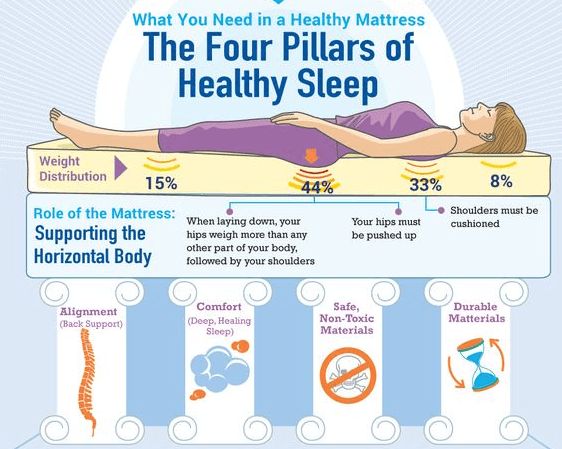
Step 3: Wind Down
Start off your nightly routine by dimming the lights and turning off screens about half an hour before bed. During this time, try some relaxing activities with your toddler, like reading a story or singing a lullaby. Think of this as a time for both you and your toddler to wind down.
Winding down at the same time every day will signal your child’s brain that it’s time to go to sleep and relax. These activities should be calming and not playful. You should avoid using your child’s bed as a play area, so this space is associated only with sleep.
Step 4: Choose a Location
Even though your toddler may want to sleep in bed with you, it’s important that your child has their own space to consistently sleep in as part of their routine. When forming a sleep schedule, both for naps and nighttime sleep, put your child in a place that they will always signal with sleep, for example, their bed. This helps with keeping the routine and consistency.
It’s important to create a safe space for a toddler's bedtime. Make sure that the area is free from oversized toys, wall hangings, cords, or anything else that could cause harm to a curious child.
Step 5: Create a Comfortable Sleep Environment
Your environment affects the quality of your sleep, and this is true for your child, too. As bedtime approaches, make sure that your child’s bedroom is quiet, dark, and cool. These conditions can make it easier to sleep.
A soft nightlight or a sound machine can also be helpful, but they shouldn’t be too bright or too loud. And again, try to avoid anything that has a screen at this time. Screens lower levels of melatonin, a chemical that signals sleep, by up to 22%.
Factors That Can Affect Your Toddler's Sleep
Toddlers need adequate sleep as part of a healthy lifestyle. While setting a bedtime routine is important for creating a sleep schedule, what they do during the daytime can be just as important, too.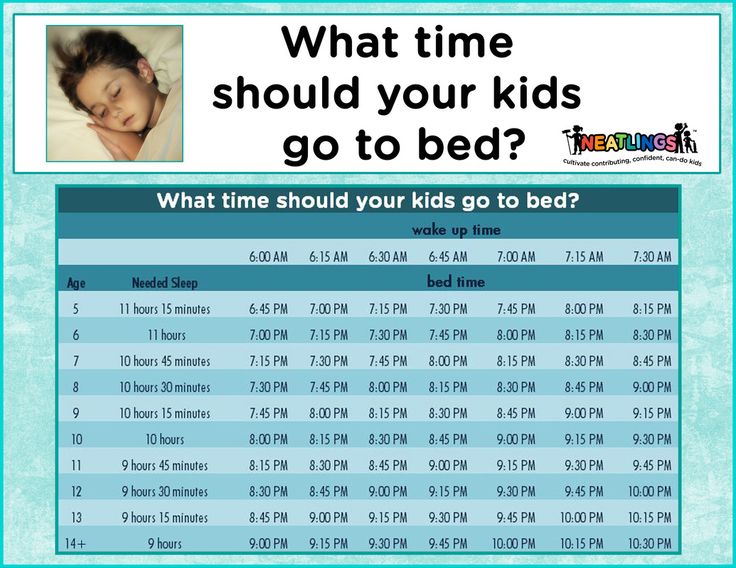
Exercise and Physical Activity
You should always make sure that your child gets enough playtime and exercise throughout the day. However, too much activity can make your toddler overtired, which may make it even harder for them to fall asleep. Try to wrap up exercise and activity two hours before bed so that your child can start relaxing.
Plan Regular Mealtimes
Just as it’s important to stick to bedtimes and wake-up times, it’s also a good idea to stick to regular mealtimes. Plan mealtimes for your toddler early enough in the day so that they feel hungrier earlier in the day and not close to bedtime.
If your child is hungry at night, a light snack is okay, but eating too much can interfere with sleep. Caffeinated drinks and liquids should be limited in the hours before bed to help your child sleep through the night.
90,000 how to change the infantry regime04/28/2011
475428
259
Child mode
Article
Elena Muradova
Elena Muradova
Head of the Babysleep Center, First Snow Consultant
Mother of three children
Does the child sleep well, but goes to bed too late, and, as a result, wakes up late? Or vice versa - the baby gets up too early - at 5:00 in the morning, the mother does not get enough sleep and wants to sleep "at least" until 6-7! It is not easy to shift a child's biological clock, but sometimes it is necessary. It is important to control the process and act consistently. nine0003
It is important to control the process and act consistently. nine0003
Child's crisis calendar
How to transfer a child to a new mode (we shift the mode back and forth in time)
In this article, I do not consider situations when the mode “flies” due to illness, teething, flights, etc. In such situations, the mother helps the child to comfortably survive the difficult period. The main thing is to stick to the regime as much as possible, minimize the number of dependencies, and if you introduce such, be aware that you will have to get rid of them later. When the “problem period” is over, help the child return to the routine. nine0003
But what to do when the baby sleeps well, gets adequate sleep, but gets up too early or stays up too late. I want to note that we are not talking about newborns: up to 8 weeks, they usually go to bed late. Also remember that shifting the regime to 7-8 months is very difficult. Babies often really need to wake up early in order to set up their optimal sleep schedule.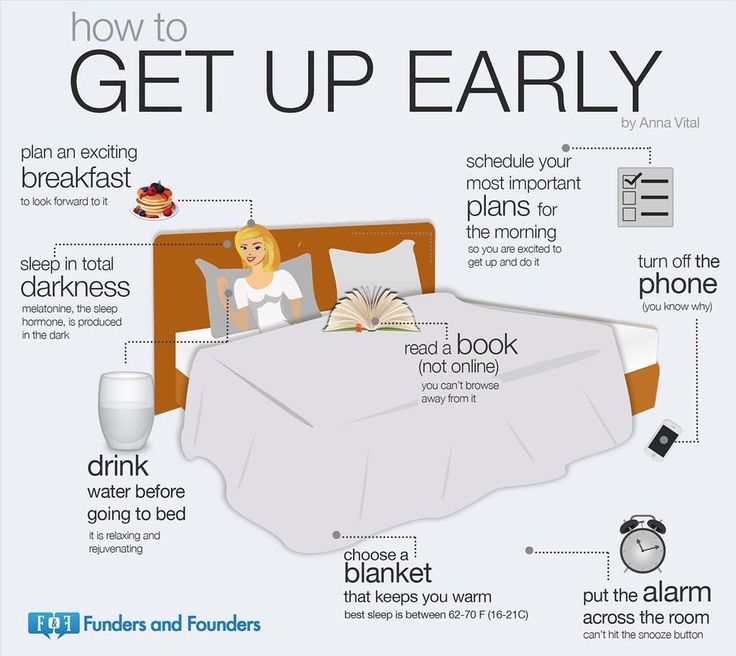 But for children older than 8 months, it is quite possible to modify the regimen, if necessary.
But for children older than 8 months, it is quite possible to modify the regimen, if necessary.
Our internal clock regulates the process of falling asleep, waking up, as well as diet and other body systems. The meaning of "movement" of the regime is to move our biological clock forward or backward in small intervals of time. nine0003
It looks quite simple, but most parents often make one of the main mistakes - they only shift the time of going to bed.
Shifting the child's regimen forward
Choosing the best moment during the day when the baby has enough strength (the child is not overtired) to endure a slight change in regimen. Usually, the last daytime nap or bedtime is suitable for this. Put your baby to bed 15 minutes later than usual. Move all subsequent dreams forward by 15 minutes as well (sometimes meals, if necessary). nine0003
There is one tricky part here. Most likely the baby will not wake up 15 minutes later. Our internal clock is fairly stable (some more, some less). Therefore, the baby can wake up at the usual time, only now he has a lack of sleep in 15 minutes. Important — do not let him make up for this lack of sleep in other dreams . In order for you to succeed, it is important to keep a record of sleep all week before changing the regimen and to know how much and when the baby sleeps, to know his norm and sleep habits. Then you can easily control the time of daytime sleep and wake up when it's time. nine0003
Our internal clock is fairly stable (some more, some less). Therefore, the baby can wake up at the usual time, only now he has a lack of sleep in 15 minutes. Important — do not let him make up for this lack of sleep in other dreams . In order for you to succeed, it is important to keep a record of sleep all week before changing the regimen and to know how much and when the baby sleeps, to know his norm and sleep habits. Then you can easily control the time of daytime sleep and wake up when it's time. nine0003
Unfortunately, babies may not get enough sleep during this process, they may get tired. It may take you up to 2 weeks to do this work - moving the biological clock forward (depending on the time of the changes - by 30 minutes, an hour, two). Every day or two, you shift the mode by 15 minutes until you reach the desired time.
Example 1. Move mode forward:
Target: Get up at 6:30 am
Current mode: 5:00 am (wake up) - 7:00 am (1st sleep) - 11:00 am (2nd dream) - 2:00 pm (3rd dream) - 5:45 pm (night sleep ).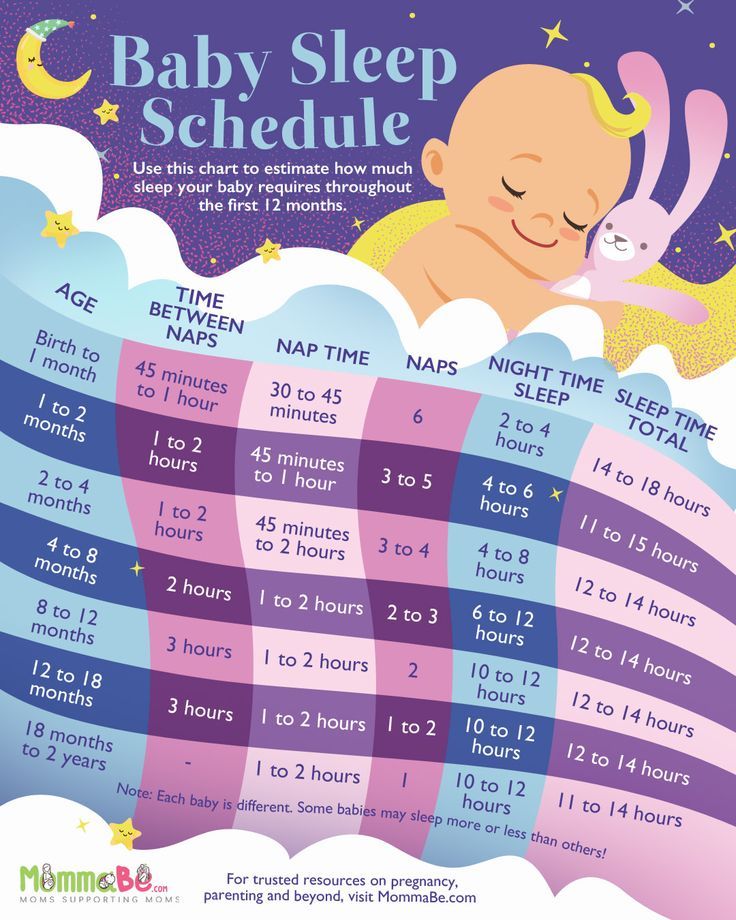 Each nap lasts 1 hour. nine0003
Each nap lasts 1 hour. nine0003
Day 1: 5:00 am (up) - 7:00 am (1st nap) - 11:00 am (2nd nap) - 2:15 pm (3rd nap) - 5:45 pm (night sleep)
Day 2: 5:00 AM (wake up) - 7:15 AM (1st nap) - 11:15 AM (2nd nap) - 2:30 PM (3rd nap) - 6:00 PM (nap at night), daytime dreams last 1 hour.
Day 3: 5:15 - 7:30 - 11:30 - 14:45 - 18:30, daytime naps last 1 hour
Day 4: 5:30 - 7:45 - 11:45 - 15:00 - 18:45, daytime naps last 1 hour
Day 5: 5:30 - 7:45 - 11:45 - 15:00 - 18:45, daytime naps last 1 hour - 1 day fix result
Day 6: 5:45 - 8:00 - 12:00 - 15:15 - 19:00, daytime naps last 1 hour
Day 7: 6:00 am - 8:15 am - 12:15 pm - 3:30 pm - 7:15 pm, daytime naps last 1 hour
And so on. I can't tell you exactly how things will develop for you, but you get the basic idea.
Move the baby back
You can't control when the baby falls asleep, but you can control how the baby wakes up. Therefore, if you want to move the child's mode back to earlier sleep (let's say the child goes to bed at 22:00 and gets up at 9:00 am), you can do this by adjusting the wake-up time.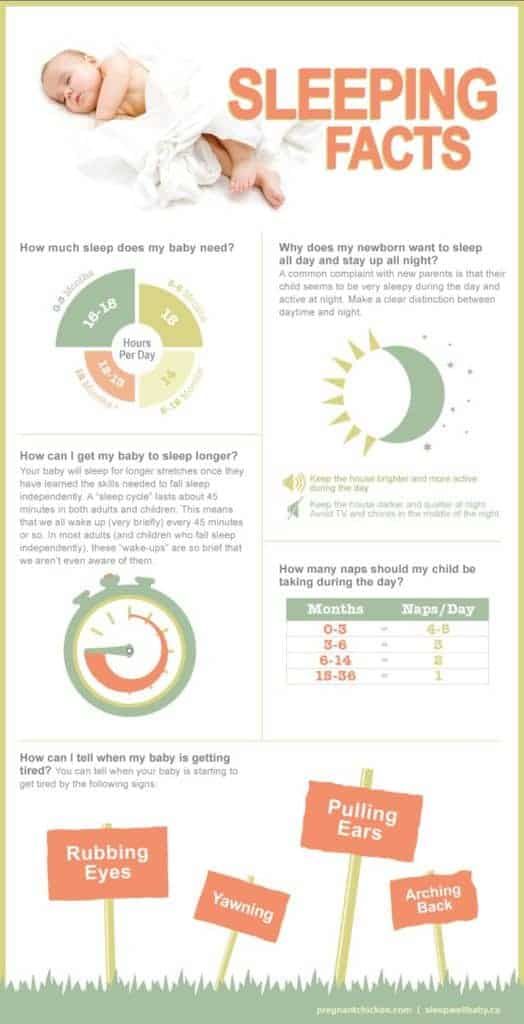
If every day you "struggle" to get to bed early from 20:00 to 22:00 pm, or try to start at 21:00 instead of 20:00 the next day, the child will still maintain his usual schedule 2 -h hour struggle before going to bed. I understand that you really want your baby to go to bed earlier, and I offer the following plan.
Put your child to bed at his usual time. And now I'm going to say something that will probably cause a storm of protest and may seem strange, but try to hear me. Wake the child 15-30 minutes before his usual awakening (put to daytime sleep the same 15-30 minutes earlier). Go to bed at your usual time for the night. The next morning, move the morning awakening and afternoon nap again by 15-30 minutes. One of your goals at this stage is to make going to bed easier and falling asleep faster. If this works out, then falling asleep itself can be perceived by the child in a different way (I really want to sleep - I sleep). nine0049 Keep lifting the baby a little earlier until you reach your goal. And most importantly — do not let him make up for the missing 15 minutes in other dreams, keep a plan for the duration of dreams.
And most importantly — do not let him make up for the missing 15 minutes in other dreams, keep a plan for the duration of dreams.
When baby starts to fall asleep faster, and by this point he may be quite tired, start to gradually shift the bedtime by 15 minutes back every day, until the extreme comfort limit when the child falls asleep willingly and quickly. When it takes 10-15 minutes to fall asleep, you have found the very “right” time to go to bed. nine0003
Example 2. Shifting the child's mode back...
Purpose: Going to bed at 20:00 pm, getting up at 7:00 am.
Current mode: 9:00 (wake up) - 15:00 (daytime sleep) - 20.30 (to bed; falls asleep at 22:00). Daytime sleep: 1.5 hours.
Day 1: 9:00 am (wake up) - 3:00 pm (nap) - 10:00 pm (to bed)
Day 2: 8:30 a.m. (wake up) - 2:30 p.m. (nap) - 10:00 p.m. (bed), no more than 1.5 hours of daytime sleep.
Day 3: 8:00 - 14:00 - 21:30, daytime sleep no more than 1.5 hours. nine0049 Day 4: 7:45 - 13:45 - 21:15
nine0049 Day 4: 7:45 - 13:45 - 21:15
Day 5: 7:30 - 13:30 - 21:00
Day 6: 7:15 - 13:15 - 20:45
Day 6: 7:00 - 13:00 - 20:30
Day 7: 7:00 am - 1:00 pm - 8:30 pm
Continue with your plan until the child is clearly awake at 8:00 pm. Or until you find a time that suits everyone, that is comfortable to live with.
I can't say exactly how your regime change will occur, but you get the gist of it. nine0003
I wish you a good routine that will ensure comfort for you and your child!
#mode
475428
', nextArrow: '', responsive: [{breakpoint: 1199, settings: {arrows: !1, infinite: !1, slidesToShow: 1}}] }) })Baby Personal Mode
Reviewer Kovtun Tatyana Anatolievna nine0003
26797 views
September 15, 2021
Login or register to save articles and products as favorites
Each child is born with its own individual character and temperament. One from birth likes to lie in bed until noon, even if he went to bed at nine o'clock in the evening, and already at three months he can sleep all night without waking up for feedings, while the other is in a hurry to live, to explore the world - and sleeps literally for half an hour. nine0051
One from birth likes to lie in bed until noon, even if he went to bed at nine o'clock in the evening, and already at three months he can sleep all night without waking up for feedings, while the other is in a hurry to live, to explore the world - and sleeps literally for half an hour. nine0051
The child sets his own personal regime for himself, and parents face a dilemma - to adjust to it themselves or to normalize the baby's regime and adapt it to their needs.
Experts unequivocally agree that a regimen is necessary for children: it allows you to streamline their lives, and changing activities, sleep and wakefulness, feeding by the hour (here we are not talking about breastfeeding, which must be performed on demand) - all this makes the child's life understandable and simple. He learns to navigate in time and follow the routine. The regimen is also very important for the baby’s health, because if one action replaces another every day, the baby’s body is already able to predict what will happen next and adjust, avoiding unnecessary stress.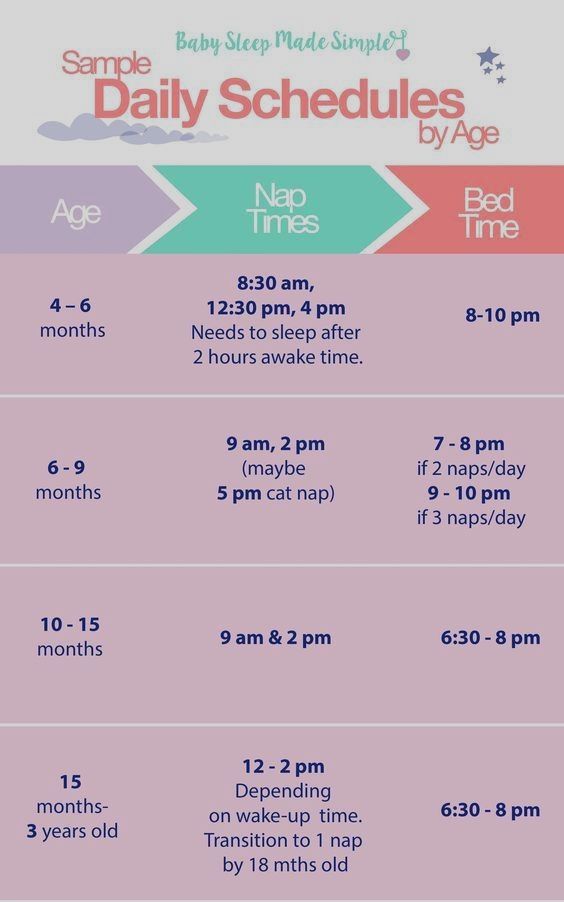 nine0003
nine0003
The task of parents is to carefully observe and listen to their baby, to look for a compromise in the child's daily routine that would suit both parties.
What can not be done?
- Force feed if baby is not hungry. Even if it's time for lunch, and the baby turns away from both the spoon and the chest, it means that he just hasn't gotten hungry yet.
- If you see that the baby is cheerful, cheerful and is not going to sleep at all, although it is supposed to be on time, do not try to convince him. You will spend two or three hours just laying down - and as a result, the baby will naturally fall asleep. But you could make better use of this time. nine0142
- If the baby flatly refuses to sleep during the day on a walk, but falls asleep as soon as you return from it, this is a reason to reconsider:
1. the time of going out for a walk, if it is important for you that he sleeps on the street;
2. try to put the baby to sleep at home - perhaps he is just not very comfortable in the fresh air.
try to put the baby to sleep at home - perhaps he is just not very comfortable in the fresh air.
Parents can be sure that the baby's regimen is optimal if the time for feeding and going to bed coincides with the needs of the child. In other words, if the baby is cheerful, cheerful, healthy and not naughty, you are doing everything right. If not, you need to find the cause of the dissatisfaction of the little one and consult with a specialist. nine0003
Another thing is that the daily routine, as mentioned above, teaches the baby to be organized, makes life easier for him and his parents. And, what is really important, in the future it will be much easier for a child who observes the regime to adapt to the conditions of a kindergarten if you send him there.
What can result from non-compliance with the regime?
- Tearfulness, capriciousness, irritability.
- Frequent deterioration of mood associated with overwork, lack of sleep.
